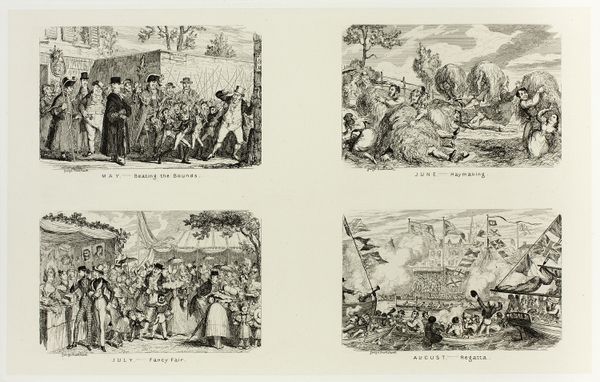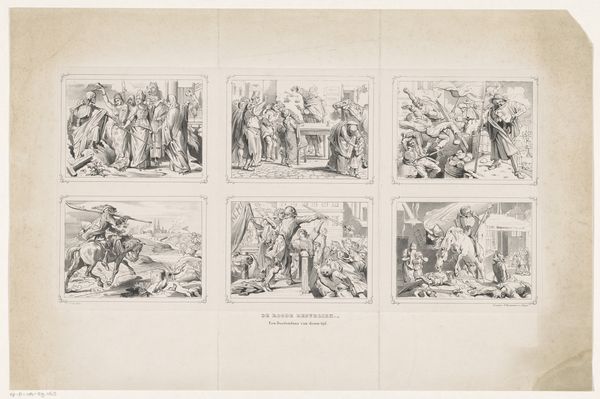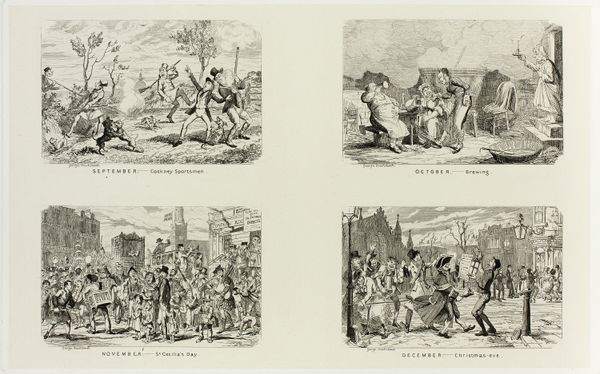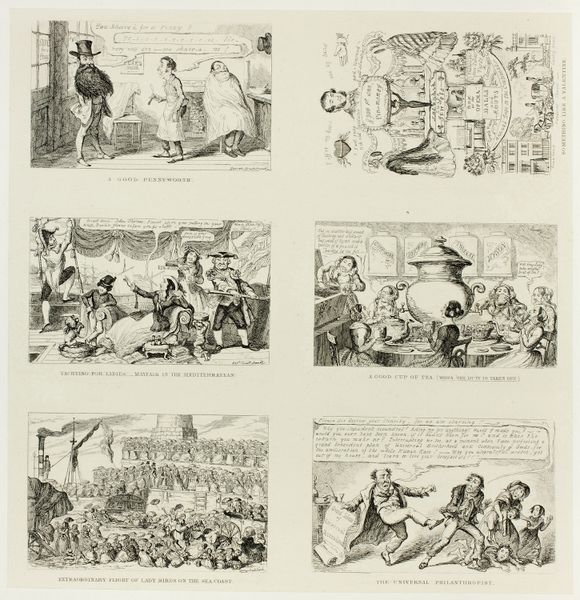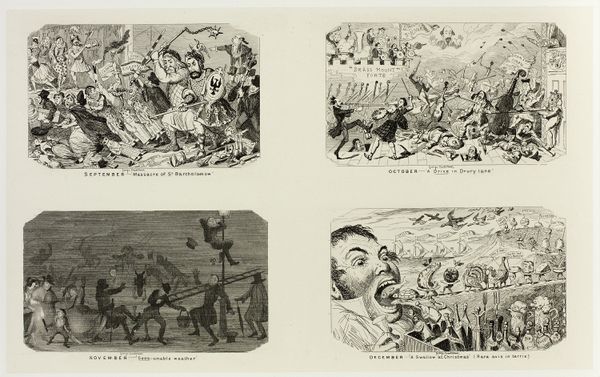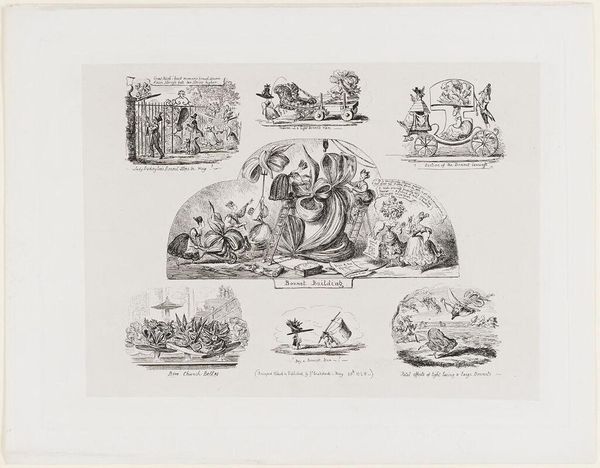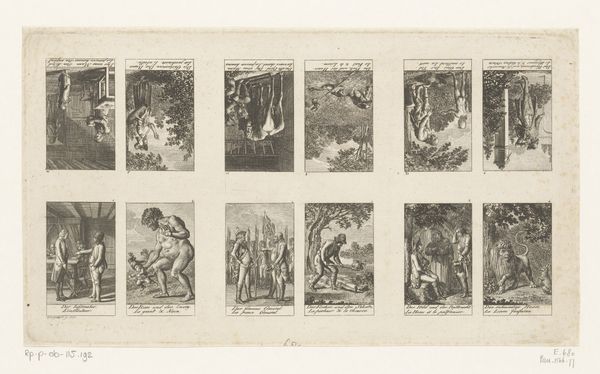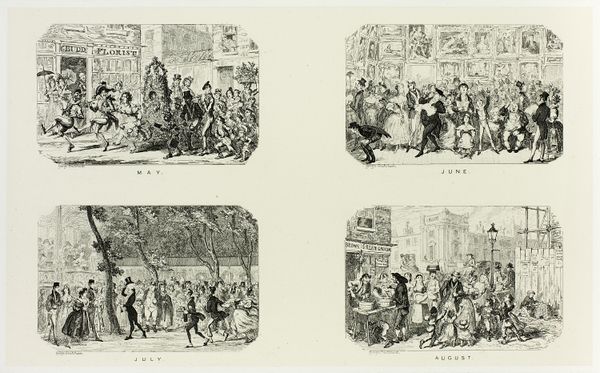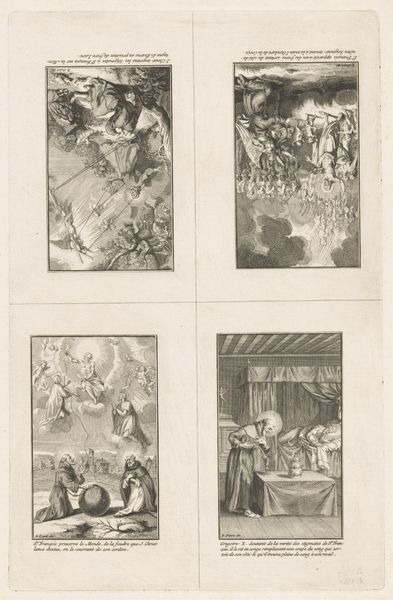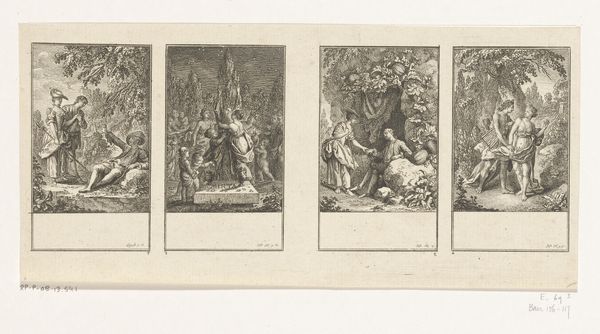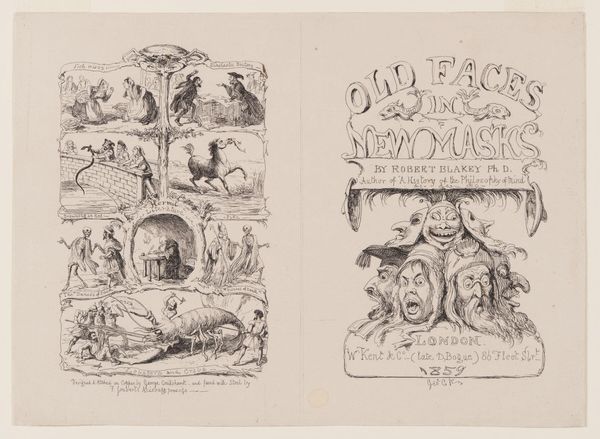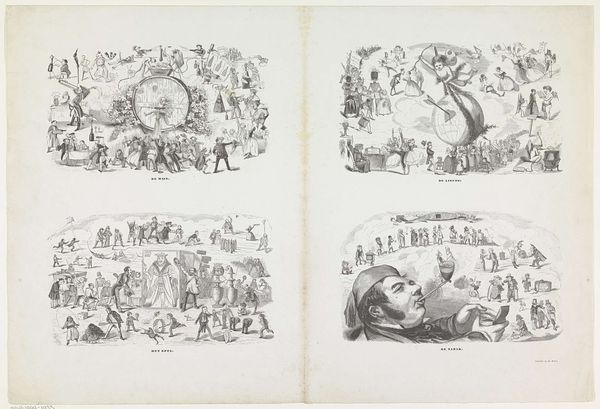
January – New Year's Eve from George Cruikshank's Steel Etchings to The Comic Almanacks: 1835-1853 (top left) c. 1838 - 1880
0:00
0:00
drawing, print, etching, paper, ink
#
drawing
# print
#
etching
#
caricature
#
figuration
#
paper
#
ink
#
england
#
line
#
genre-painting
Dimensions: 206 × 332 mm (primary support); 343 × 506 mm (secondary support)
Copyright: Public Domain
Editor: Here we have "January – New Year's Eve" by George Cruikshank, one of a series of steel etchings from the mid-19th century. It feels incredibly lively, almost chaotic, capturing a bustling party scene. What's your interpretation of this festive chaos? Curator: This print offers a glimpse into the social and cultural dynamics of 19th-century England. Cruikshank’s work, while seemingly celebratory, often critiques social mores. Look at the extravagance depicted – the overflowing scene of revelry. Can we see this New Year's Eve party, through our contemporary lens, as a microcosm of class disparity and perhaps even social anxieties around displays of wealth? Editor: That’s a really interesting point. I hadn't considered the potential for social commentary. I was focused on the joyful exuberance, but the excess is hard to ignore. Do you think the style of caricature emphasizes that critique? Curator: Absolutely. The exaggeration inherent in caricature, particularly Cruikshank's style, allows him to highlight the absurdities and excesses of the time. Think about the figures, their expressions, their postures; they border on grotesque. How might we read this through the lens of feminist theory, for instance, considering the representation and possible objectification of the female figures within this scene? Editor: So it's not just a party scene, but a complex statement about the social landscape. Seeing it through that lens makes the image much more powerful. Curator: Precisely! And it reminds us to always question whose story is being told and from what perspective. Considering gender, class, and social commentary transforms this from a simple depiction of revelry into a potent piece of social critique. Editor: This has really changed how I view this print; it is much deeper and complex than I initially thought. Thank you for illuminating all those dimensions. Curator: My pleasure. Hopefully this approach enriches your understanding of art and its connection to broader socio-political contexts.
Comments
No comments
Be the first to comment and join the conversation on the ultimate creative platform.
